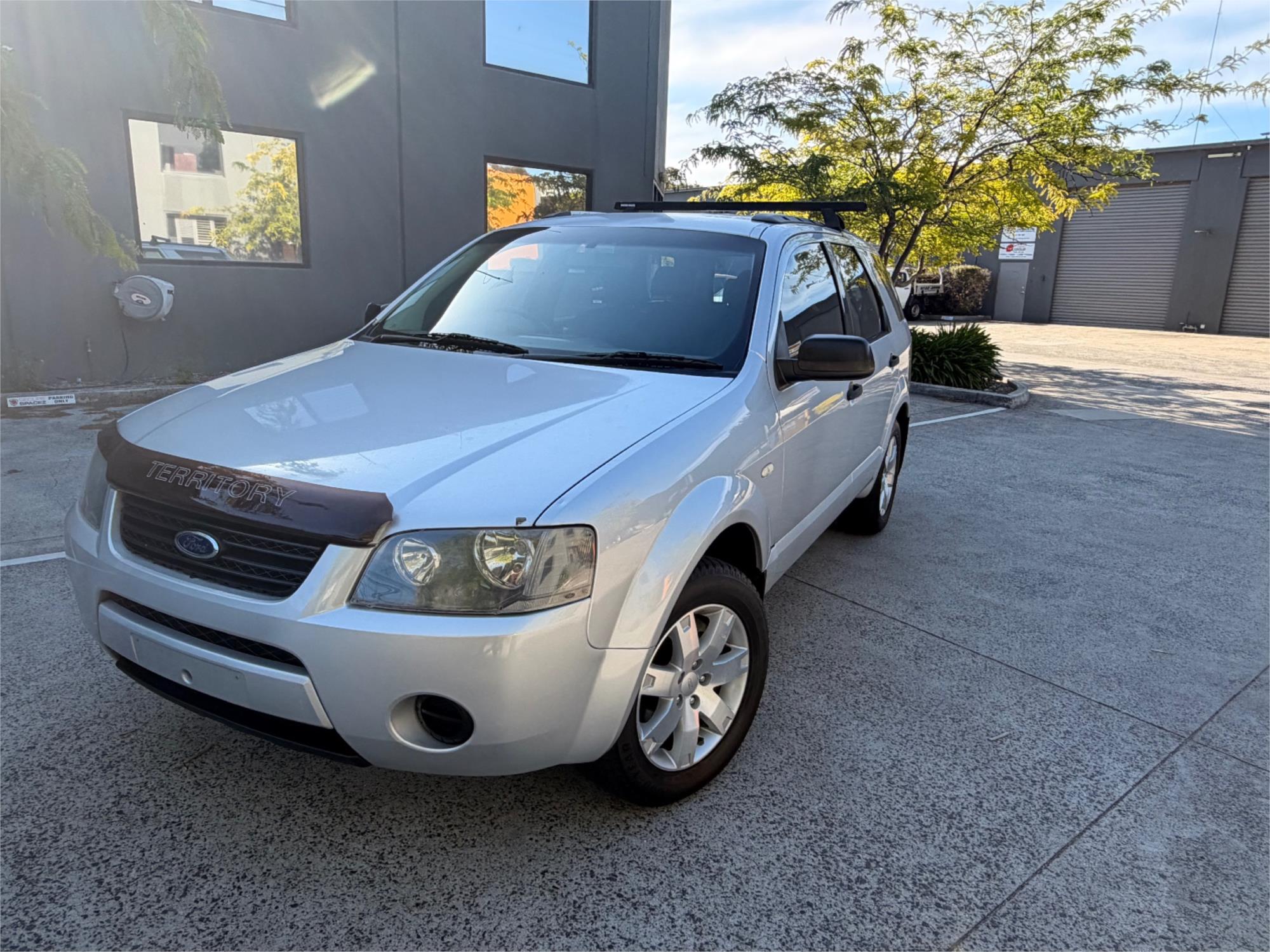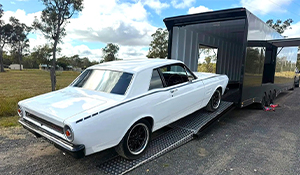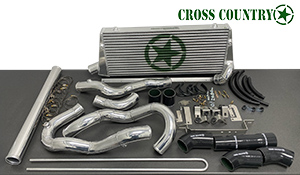FEATURE - Lamborghini LM002
Words: Mike Ryan Photos: Newspress UK
Describing any vehicle as the best example of its type available is a big call, but it’s a call made by UK-based restoration specialist, Bell Sport & Classic, following their rebuild of an unloved example of Lamborghini’s original SUV, the LM002.
With only 301 units of this big, bold off-roader built, it’s perhaps easier to check than if the LM002 was produced in big numbers. Nevertheless, Bell Sport & Classic are confident in their claim.

Top Gear Test
The 40th unit of the 301 LM002s built, this particular left-hand drive example rolled out of the Lamborghini factory in 1987, finished in Blu Acupulco Metalliza (Acapulco Blue metallic) paint with a grey leather interior.
The vehicle’s early history is unknown, but it came to the UK in 2003 and featured on a Lamborghini-themed special on Top Gear, where it was thrashed by the TV show’s famous test driver, The Stig.
In the same year, Lamborghini’s long-serving factory test driver, Valentino Balboni, reportedly gave this vehicle his personal approval at a Lamborghini Owners’ Club meeting in the UK.
Driven on and off road for several years after that, the LM002 was put into storage in 2009 and remained there for some time until a restoration was undertaken – with disastrous results. That failed attempt eventually led the owner to take his Lamborghini to Bell Sport & Classic.

Bell’s Journey
The roots of Bell Sport & Classic lay in fields as diverse as glassmaking, printing and plastics, before company founder Peter Bell turned to the automotive aftermarket industry.
Bell initially produced petrol storage containers under the ‘Bell Products’ brand name, and followed the success of that product with others, including towropes and temporary replacement windscreens.
After selling the business, Peter established Bell Classics in 1989. Two decades spent specialising in Austin Healeys was followed in 2009 with a move into sales, servicing and restoration of prestige marques, like Aston Martin, Ferrari and Maserati, by the new owner of the business.
An all-new showroom and workshop was established in 2017, followed by the drafting in of new sales staff a year later to support the existing service and restoration team. Last year, the business was rebranded as Bell Sport & Classic.

Bell’s Rebuild
This LM002 arrived at Bell Sport & Classic in 2019 in a sad state with multiple boxes of components. Fortunately, Bell had the man to bring the rare SUV back to life in their master technician, Attilio Romano. A former Ferrari factory technician, Attilio has over 40 years’ experience in service and restoration, including time spent as lead technician at London prestige car dealership H.R. Owen. Working across Ferrari, Lamborghini and Bugatti, Attilio was also the first factory-registered technician to work on a Veyron in the UK during his time at that dealership.
“The engine block was still in place,” Attilio remembers ahead of starting work on the LM002, “but most of the ancillaries had been stripped. All the separated components were supplied in boxes…it was a bit of a detective job, so the first thing we did was a thorough inventory.”
Once that was complete, it was time to tackle the refurbishment.
With many parts specific to the LM002 now unavailable from Lamborghini, Bell Sport & Classic had to turn to trusted suppliers or manufacture new components in-house.

Shocks, Power and Shifting
From the factory, the LM002’s suspension featured two springs and dampers per wheel, while the front end used a spring-within-a-spring suspension unit, where the two springs wound in opposite directions. Disassembling the front end’s unique set-up required specialty tools, which even Lamborghini no longer had in their factory. No other business had the required tools, either, so Attilio created his own rig to compress and remove the two springs in one operation. Once apart, all components were thoroughly checked and sent to be powder coated.
On examination of the V12 engine, the water pump was found to be leaking though the bearing seals. To make matters worse, the housing had fractured – and the part was no longer stocked by Lamborghini, so Chesman Engineering of Coventry was commissioned to make an entirely new pump to factory-authentic specification.

Water pump aside, the engine was in good condition, having only recorded 13,690 miles. All other ancillary components were checked and overhauled where necessary, while the non-standard rear exhaust box on the LM002 as it came to Bell’s was replaced with an original specification system. Attilio manufactured modified mounting points to attach this in the correct position.
As for the 5-speed manual transmission, Attilio discovered that the teeth on the dog gear and centre diff had been damaged. List price for a replacement was over £6,000 (around AU$9,100 approx.) which was a big issue, but the fact no new units were available was a bigger one. Using his many years of engineering experience, Attilio reshaped the teeth using die grinders and files, so the transfer box once more works as Sant’Agata’s engineers intended.
The rest of the four-wheel drive system was, presumably, in good shape, as the Bell Sport & Classic team make no mention of having to repair any other elements on this.

Attention Inside and Outside
The factory grey leather interior was in good condition for a vehicle 30+ years old and its patina was described as being part of the story of this particular LM002, so instead of being replaced, it was carefully cleaned and all minor tears and scuffs repaired.
The car was then sent for a full respray in the original factory Blu Acupulco Metallizato finish and all door seals were replaced before the recommission was completed.
In total, the LM002’s refurbishment took close to a year, and while it’s not a concours-spec vehicle, Bell Sport & Classic’s Managing Director, Tim Kearns, describes it as the best example on the market.

“This painstaking project has resulted in what must be the best Lamborghini LM002 available – perhaps even the best in existence - and it has only been possible because of the skill and passion that lies within Bell Sport and Classic,” Kearns stated.

“The attention to detail, engineering excellence, quality and authenticity is beyond reproach and I am immensely proud of the work Attilio and the team have put in.”
At time of writing, this refurbished LM002 was for sale through Bell Sport & Classic, described as “slightly Stigged” and with an asking price of £285,000 (AU$520,000 approx.)
“Whoever buys this LM002 will have an absolutely outstanding period-correct example of one of the most outrageous cars in Lamborghini’s history.”
Interested? Go to: https://www.bellsportandclassic.co.uk/ for more details.
Lamborghini LM002 – a brief history
What became the LM002 was born from Lamborghini’s desperate search for more revenue in the mid-1970s as the company teetered on the brink of bankruptcy.
At the same time, the US Army was looking to replace its long-serving Jeep and called for bids for a new HUMMV (High Utility Mobile Military Vehicle). Lamborghini responded, but in a backdoor way. As such a contract would always favour a domestic supplier, Lamborghini partnered with US firm Mobility Technology International (MTI), who would be the “face” of the bid, even though Lamborghini would design and build the vehicle.
Released in 1977, Lamborghini’s concept, dubbed ‘Cheetah’, was an open-style vehicle in the Jeep tradition, but featured a rear-mounted Chrysler V8 engine, automatic transmission and permanent four-wheel drive.

Besides being foreign built, the Cheetah had more fundamental problems with its engineering and was ultimately rejected in favour of the design from AM General, which was the ‘Humvee’ we’re all familiar with.
Lamborghini went into receivership in 1978, so the idea of any future vehicles, let alone off-road ones, seemed implausible. Salvation came two years later in the form of the Mimran Group, who first leased, then purchased Lamborghini outright.
New capital meant the Cheetah concept was revived, but now with a view to production for the civilian market as well as the military. In 1981, the ‘LM001’ was unveiled, ‘LM’ standing for ‘Lamborghini Military’ or ‘Lamborghini Mimran’, depending on which source material you believe.
With an all-new body design, including a fully-enclosed cabin, the LM001 also used a Lamborghini engine. This was still rear-mounted, though, so the LM001 suffered the same problems with handling and front-rear weight transfer under acceleration that led to the Cheetah being rejected.

The solution was to move the engine to the front, with this next iteration dubbed ‘LMA’ (‘A’ for Anterior, ie. front). This was much closer to what would be the final production model, which was released in 1986 and badged as the LM002.
By this time, thoughts of chasing military contracts had been abandoned (although the Saudi Arabian Army are alleged to have purchased some units), so the LM002 was lavishly appointed inside, with leather upholstery throughout, timber trim on the dash, centre console and doorcards, electric windows, a stereo system and air conditioning amongst the standard features.
The drivetrain was virtually the same 5.2-litre V12 and 5-speed manual used in the Countach supercar, which made the LM002 one of the fastest and most powerful four-wheel drives on the planet, but it was also the most thirsty, requiring a massive 290-litre fuel tank to keep it in motion.

Despite its slant toward luxury and performance, the two-speed transfer case and three locking diffs in the four-wheel drive system, as well as heavy-duty suspension and run-flat tyres, showed Lamborghini were still serious about making the LM002 capable off-road.
The LM002’s high specification and high performance meant a high price tag, so celebrities, dictators, royalty and drug lords made up the bulk of LM002 customers. Sylvester Stallone was one of several in Hollywood to own an LM002, which led to the ‘Rambo Lambo’ nickname the vehicle gained and never shook off.
LM002 production continued at a trickle through the 1980s and early ‘90s, with most being built to order in the final few years. When production ended in 1993, a grand total of 301 had been built.
After 1993, Lamborghini would not revisit the concept of an “off-road” model until the release of the Urus SUV in 2017.









